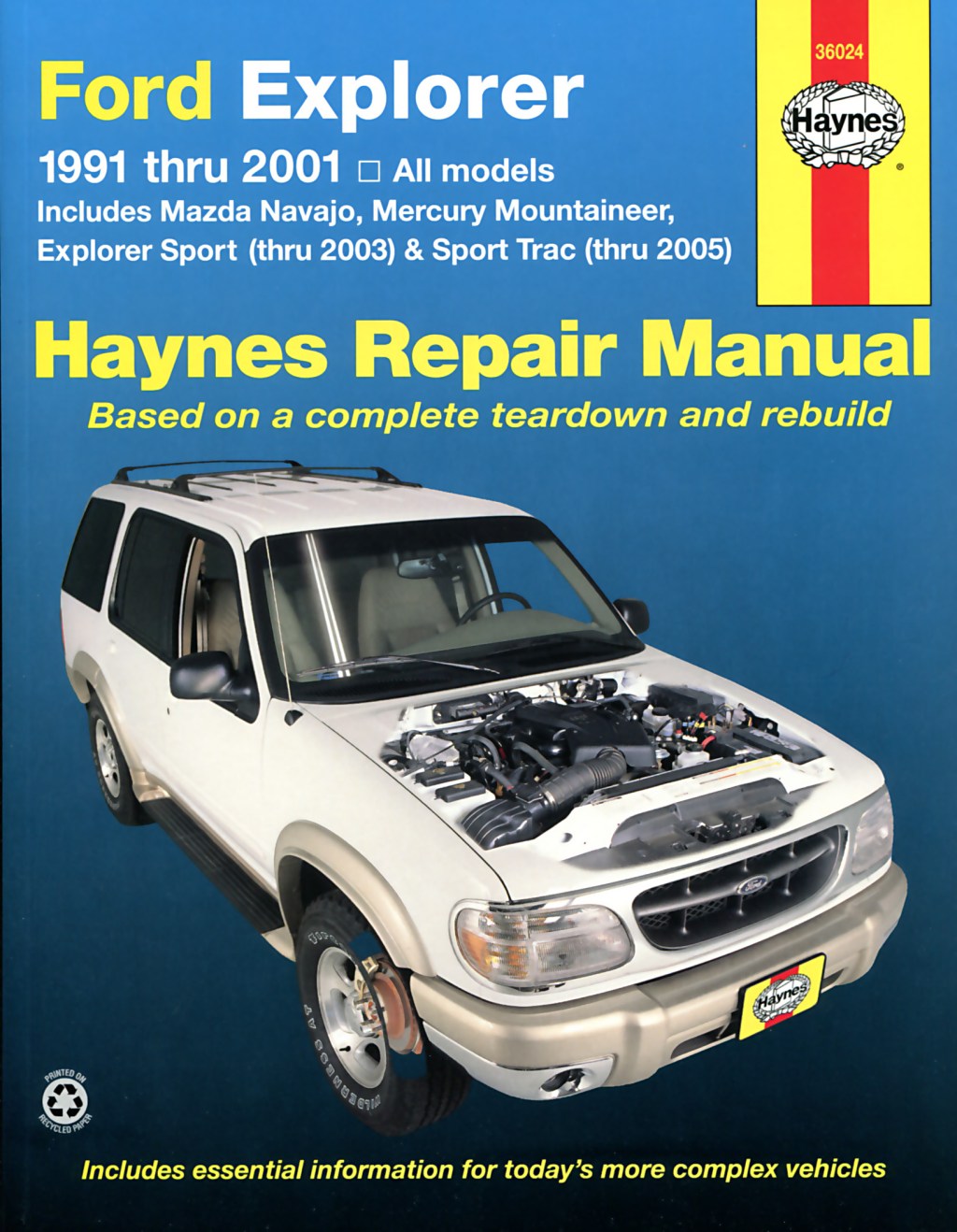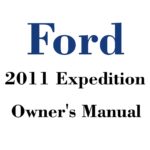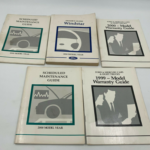Resolve Your 1996 Ford Explorer Manual Transmission Problem Today! Click For Expert Solutions!
1996 Ford Explorer Manual Transmission Problem: A Comprehensive Review
Introduction
The 1996 Ford Explorer gained popularity for its ruggedness and reliability on and off the road. However, one recurring issue that many owners faced was related to the manual transmission. In this article, we will delve into the various aspects of the 1996 Ford Explorer manual transmission problem, providing insights, tips, and recommendations for those who are experiencing or want to prevent such issues.
3 Picture Gallery: Resolve Your 1996 Ford Explorer Manual Transmission Problem Today! Click For Expert Solutions!
Overview

Image Source: ytimg.com
The manual transmission problem in the 1996 Ford Explorer refers to the difficulties or malfunctions experienced by owners when changing gears or maintaining a smooth driving experience. These issues can range from grinding noises and difficulty engaging gears to complete transmission failure.
Purpose of the Manual
The purpose of the manual is to provide owners with detailed information and instructions on how to operate, maintain, and troubleshoot their 1996 Ford Explorer’s manual transmission. It serves as a comprehensive guide that covers everything from basic controls and functionalities to advanced troubleshooting techniques.
Manual’s Structure and Organization

Image Source: haynes.com
The manual is divided into several sections that cover different aspects of the manual transmission. It begins with an introduction and overview, followed by detailed information on key features, controls, and functionalities. The subsequent sections provide fluid capacities, specifications, troubleshooting guides, and maintenance schedules. Additionally, the manual includes sections on safety, towing capacities, accessories, and updates and revisions.
The Importance of the Manual

Image Source: ytimg.com
The manual is essential for owners as it empowers them to understand their vehicle’s manual transmission better. It enables them to identify and address issues promptly, potentially saving them from costly repairs or breakdowns. Additionally, the manual helps owners optimize their driving experience and ensure the longevity of their vehicle.
Body Paragraphs
What is the 1996 Ford Explorer Manual Transmission Problem?
The 1996 Ford Explorer manual transmission problem refers to various issues that owners may encounter when operating their vehicle’s manual transmission. These issues include grinding noises, difficulty shifting gears, gear slippage, and even complete transmission failure.
Who Might Experience the Problem?
Owners of the 1996 Ford Explorer with manual transmission are most likely to experience the problem. However, it is essential to note that not all owners will face these issues. The severity and frequency of the problems can vary depending on factors such as maintenance, driving habits, and overall vehicle condition.
When Does the Problem Occur?
The manual transmission problem can occur at any time during the ownership period. Some owners may experience issues early on, while others may encounter them after several years of driving. Regular maintenance and proper driving techniques can help prevent or postpone these problems.
Where Can the Problem Manifest?
The problem with the manual transmission can manifest in various scenarios, including during gear changes, acceleration, deceleration, or when engaging the clutch. These issues can occur in both on-road and off-road driving conditions.
Why Does the Problem Occur?
The problem with the 1996 Ford Explorer’s manual transmission can arise due to a range of factors. These include worn-out clutch components, damaged gears, inadequate lubrication, hydraulic system malfunction, or improper driving techniques. Regular maintenance and proper driving habits can minimize the chances of encountering such issues.
How to Address the Problem?
Addressing the manual transmission problem requires a systematic approach. Owners should start by referring to the manual’s troubleshooting guide to identify potential causes and solutions. If the issue persists, it is advisable to consult with a certified mechanic or Ford dealership for a comprehensive diagnosis and repair.
FAQs about the 1996 Ford Explorer Manual Transmission Problem
Q: Can I drive my 1996 Ford Explorer with a manual transmission if I’m experiencing problems?
A: It is not recommended to continue driving the vehicle if you are experiencing significant issues with the manual transmission. Continuing to operate the vehicle may lead to further damage and potentially result in a breakdown. It is best to seek professional assistance for a thorough diagnosis and repair.
Q: How much does it cost to repair the manual transmission in a 1996 Ford Explorer?
A: The cost of repairing the manual transmission in a 1996 Ford Explorer can vary depending on the severity of the problem, the required parts, and the labor rates in your area. It is advisable to obtain multiple quotes from reputable repair shops or dealerships to compare prices and ensure a fair deal.
Q: Can I prevent manual transmission problems in my 1996 Ford Explorer?
A: While some manual transmission problems may be unavoidable, there are steps you can take to minimize the chances of encountering these issues. Regular maintenance, including fluid changes and clutch inspections, can help identify and address potential problems early on. Additionally, practicing proper driving techniques, such as avoiding aggressive shifting or excessive clutch slipping, can contribute to the longevity of your manual transmission.
Transition Paragraphs
Now that we have discussed the basics of the 1996 Ford Explorer manual transmission problem, let’s explore some key features and functionalities of this vehicle’s manual transmission.
Key Features
The manual transmission in the 1996 Ford Explorer offers a range of features that enhance the driving experience. These include a smooth gear shifting mechanism, a well-balanced clutch, and precise gear ratios. These features contribute to the overall performance and reliability of the manual transmission.
Controls and Functionalities
The manual transmission in the 1996 Ford Explorer is equipped with intuitive controls that enable seamless gear changes. The gear lever is ergonomically positioned, allowing drivers to shift gears effortlessly. Additionally, the clutch pedal provides a good feedback mechanism, ensuring smooth engagement and disengagement of gears.
Fluid Capacities
Understanding the fluid capacities of the manual transmission is crucial for maintaining optimal performance. The 1996 Ford Explorer manual provides detailed information on the type and quantity of fluid required for proper lubrication and cooling of the transmission. Regular fluid checks and changes are essential to prevent overheating and premature wear.
User-Friendly Features
The user-friendly features of the manual transmission in the 1996 Ford Explorer include clear gear indicators, a reverse gear lockout mechanism, and a clutch start switch. These features enhance the overall driving experience and ensure safety.
Troubleshooting Guides
The manual transmission troubleshooting guides in the 1996 Ford Explorer manual are invaluable resources for owners facing transmission issues. These guides provide step-by-step instructions on diagnosing and addressing common problems, enabling owners to save time and money on repairs.
Safety
Safety is of utmost importance when it comes to the manual transmission in the 1996 Ford Explorer. The manual provides detailed safety precautions and guidelines to ensure that owners operate the transmission in a safe manner. Following these guidelines can help prevent accidents or injuries caused by improper gear changes or clutch engagement.
Illustration/Example Paragraphs
Let’s take a closer look at some examples that illustrate the 1996 Ford Explorer manual transmission problem and how it can be addressed.
Grinding Noises during Gear Changes
One common issue reported by owners is grinding noises when shifting gears. This can be indicative of worn-out synchro rings or damaged gears. To address this problem, owners should consult the manual’s troubleshooting guide and inspect the transmission for any visible damage. Replacing worn-out components or seeking professional assistance may be necessary for a complete repair.
Difficulty Engaging Gears
Another prevalent problem is difficulty engaging gears, especially when shifting into reverse or first gear. This can be caused by a faulty clutch master cylinder or slave cylinder. Owners can start by checking the hydraulic fluid levels and bleeding the clutch system to remove air bubbles. If the problem persists, a thorough inspection and potential replacement of the hydraulic components may be required.
Complete Transmission Failure
While less common, complete transmission failure can occur in severe cases. This usually happens due to a combination of factors, including lack of maintenance, excessive wear, or internal component failures. When faced with complete transmission failure, owners should seek professional assistance for a comprehensive diagnosis and repair. In some cases, a transmission rebuild or replacement may be necessary.
Comparison/Contrast Paragraphs
Now, let’s compare the 1996 Ford Explorer manual transmission problem with other models or technologies to understand its unique characteristics.
1996 Ford Explorer vs. 1996 Ford Ranger
While both the 1996 Ford Explorer and the 1996 Ford Ranger shared similar manual transmission systems, the frequency and severity of transmission issues differed. The Ford Explorer, being a larger and heavier vehicle, experienced more frequent problems related to clutch wear and gear synchronization. On the other hand, the Ford Ranger, being a smaller and lighter truck, had fewer reported issues.
Manual Transmission vs. Automatic Transmission
This post topic: Manual



